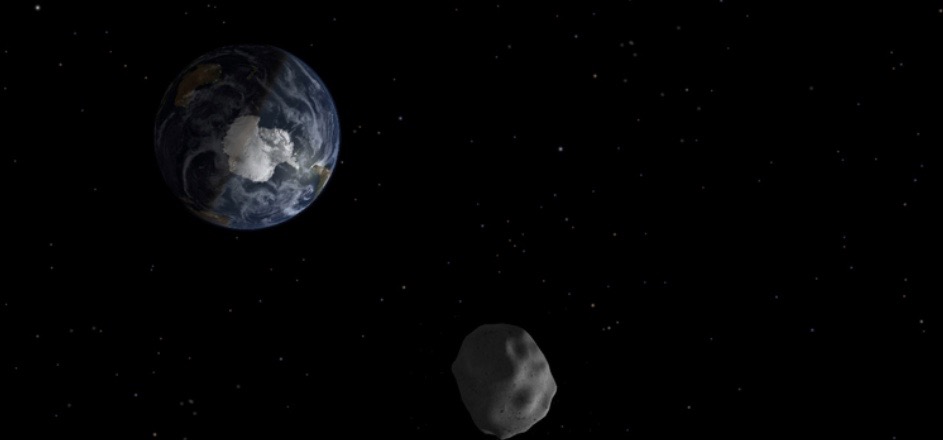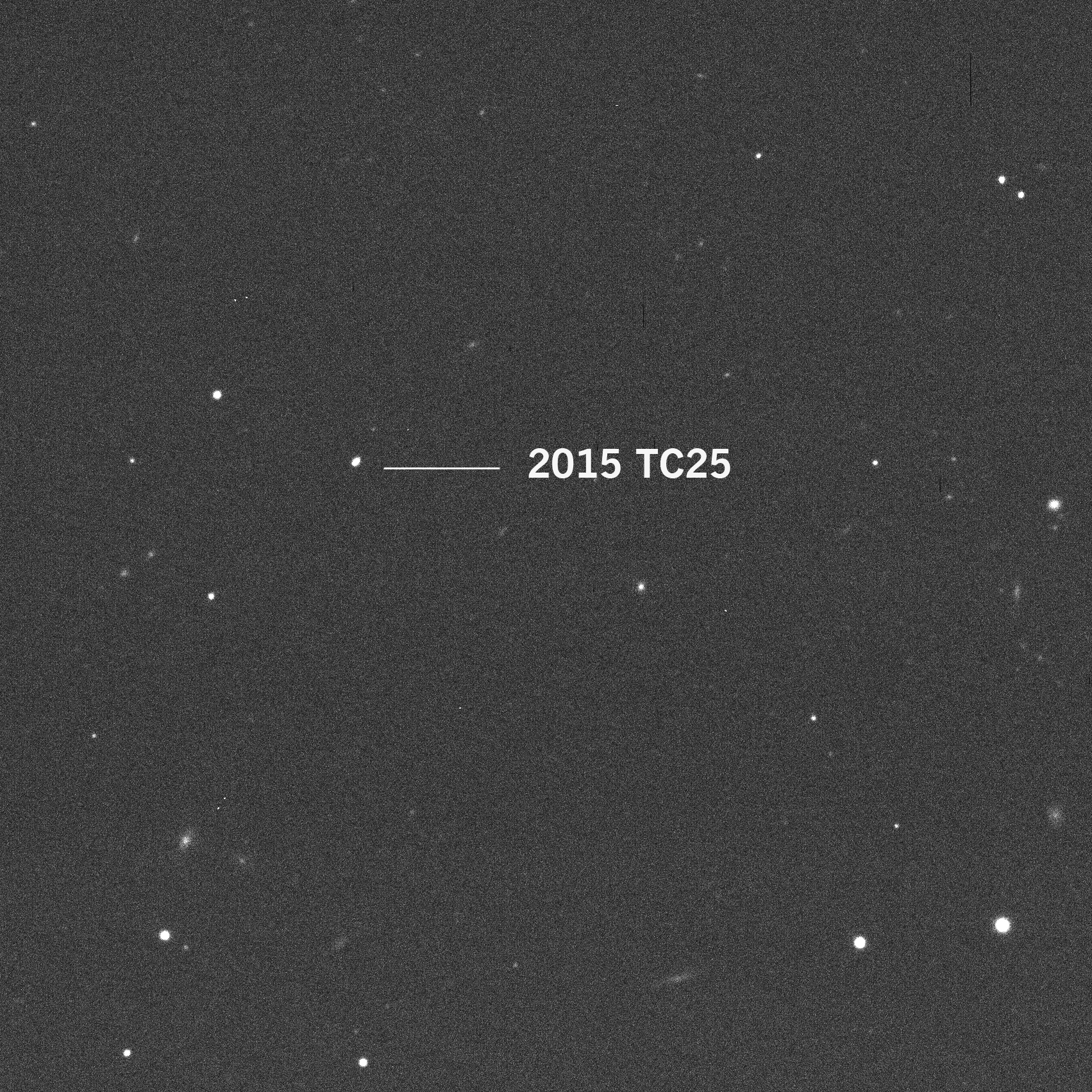
Astronomers have set a new record, taking the measure of a tiny space rock just 6 feet (2 meters) wide.
The researchers used four different telescopes on Earth to study the near-Earth asteroid (NEA), which is called 2015 TC25, during a close flyby it made of the planet in October 2015.
"This is the first time we have optical, infrared and radar data on such a small asteroid, which is essentially a meteoroid," Vishnu Reddy, of the University of Arizona's Lunar and Planetary Laboratory, said in a statement. [Potentially Dangerous Asteroids in Pictures]
"You can think of it as a meteorite floating in space that hasn't hit the atmosphere and made it to the ground — yet," added Reddy, lead author of a new study published in The Astronomical Journal that reports the 2015 TC25 observations. (But the chances of the asteroid hitting Earth in the foreseeable future are small, he said.)

Reddy and his team found 2015 TC25 to be surprisingly bright, reflecting about 60 percent of the sunlight that hits it. The asteroid also rotates once every 2 minutes, making it one of the fastest-spinning NEAs ever observed, researchers said.
In addition, 2015 TC25 appears to be a chunk of solid rock, rather than a rubble pile like many bigger asteroids. The tiny asteroid also consists of essentially bare rock; it lacks the layer of dirt-like regolith that blankets its larger brethren.
"Detecting this on 2015 TC25 means all small asteroids might be bald and dust-free," Reddy said in a different statement.
Get the Space.com Newsletter
Breaking space news, the latest updates on rocket launches, skywatching events and more!
The asteroid was discovered in October 2015, shortly before its Earth flyby, which brought the space rock within just 79,500 miles (128,000 kilometers) of the planet's surface. (For comparison: The moon orbits Earth at an average distance of 239,000 miles, or 384,600 km).
2015 TC25 is a NEA that circles the sun once every 382 days. But Reddy and his team think a collision probably chipped the space rock off 44 Nysa, a 43-mile-wide (70 km) asteroid that resides in the main belt between Mars and Jupiter.
"If we can discover and characterize asteroids and meteoroids this small, then we can understand the population of objects from which they originate: large asteroids, which have a much smaller likelihood of impacting Earth," Reddy said.
The researchers studied 2015 TC25 using the NASA Infrared Telescope Facility in Hawaii, the Arecibo Observatory in Puerto Rico, the Magdalena Ridge Observatory in New Mexico and the Lowell Observatory/Discovery Channel Telescope in Arizona.
Follow Mike Wall on Twitter @michaeldwall and Google+. Follow us @Spacedotcom, Facebook or Google+. Originally published on Space.com.
Join our Space Forums to keep talking space on the latest missions, night sky and more! And if you have a news tip, correction or comment, let us know at: community@space.com.

Michael Wall is a Senior Space Writer with Space.com and joined the team in 2010. He primarily covers exoplanets, spaceflight and military space, but has been known to dabble in the space art beat. His book about the search for alien life, "Out There," was published on Nov. 13, 2018. Before becoming a science writer, Michael worked as a herpetologist and wildlife biologist. He has a Ph.D. in evolutionary biology from the University of Sydney, Australia, a bachelor's degree from the University of Arizona, and a graduate certificate in science writing from the University of California, Santa Cruz. To find out what his latest project is, you can follow Michael on Twitter.









